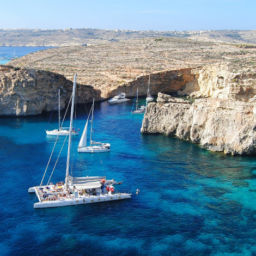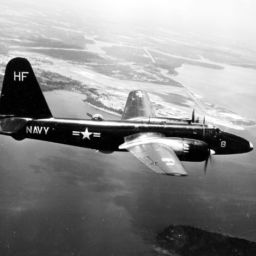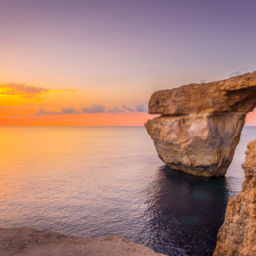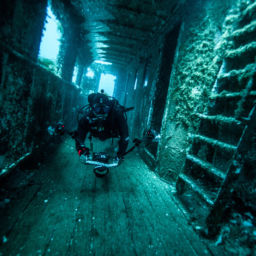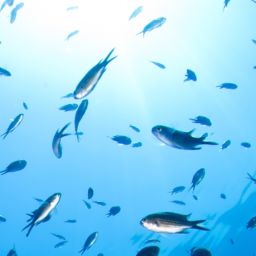We recently wrote about the fantastic recreational diving in Malta. If you’re into wreck diving in warm, clear water, it’s a fantastic choice, easily accessible from anywhere in Europe. But the technical diving in Malta is just as impressive, with a variety of wrecks available just beyond recreational depths.
Because so many wrecks dot the Maltese coast at varying depths, it’s perfect for technical fun dives and courses at all levels. For those taking a foundation tech course, there are plenty of shallow dive sites for practicing new skills. On decompression courses, wrecks such as the MV Karwela, with its famous staircase, offer something to explore in the (35 to 45 m) range as you rack up some deco before heading back to a shallow reef on your decompression stops.
For deeper courses, such as open-circuit trimix or mixed-gas rebreather, Malta offers some fantastic and historically important deep wrecks. If you are already trimix certified, these are exactly the type of dive sites that made you want to get the qualification in the first place. We covered the shallower wrecks, such as the Um El Faroud, in our previous article, so here we’ll focus on the deeper wrecks each of them a highlight of technical diving in Malta.
SS Polynesian
The WWI-era SS Polynesian wreck sits upright, with a list to port, on the seabed between 174 and 213 feet (53 m and 65 m) seven miles (11 km) offshore from Valetta. It launched in April 1890 and worked as a French passenger ship until WWI. In 1914, the French Government commandeered the ship for troop transport. This made it a prime target for the German Navy and, in August 1918, while carrying Serbian troops, a UC22 German mine-laying submarine attacked and sank the ship. It sank within 20 minutes with the loss of 10 men.
At 492 feet (150 m) long, there is a lot of wreck to explore. A deck gun, fitted by the French Navy, is still visible, and it’s is in good condition considering how long it’s been underwater.
HMS Southwold
HMS Southwold was a Type-II British Hunt-class destroyer operating during WWII. Its main role was to act as a convoy escort for merchant ships, which meant keeping constant alert for enemy warships, mines, aircraft and, of course, the dreaded U-boat. On March 23, 1942, a group of 10 destroyers, three cruisers, and one battleship from the Italian Navy attacked its convoy. Most of the ships escaped with light damage, but the cargo ship Clan Campbell went down. The oil tanker Breconshire was hit as well. While towing the Breconshire, the Southwold hit a mine, which caused significant damage to the engine room. Although the crew attempted to tow the Southwold back to port, they had to abandoned the ship due to bad weather. It subsequently broke in two and sank.
The wreck lies 1.5 miles (2.4 km) offshore of Marsaskala, and sits at around 230 feet (70 m) on the seabed in two sections. The bow is 131 feet (40 m) long and sits on its starboard side. The stern, which lies around 984 feet (300 m) away from the bow is around 92 feet (28 m) long and sits upright. The distance alone between the bow and stern means that you will need to do numerous dives to properly explore the wreck.
HMS Stubborn
The Stubborn was a British S-class submarine that survived WWII after operating in the North Sea, Mediterranean, and the Pacific. It was commissioned in 1943 and suffered serious damage in 1944 after attacking a convoy and being crippled by their escorts. The wreck sat on the bottom of the North Sea without power for 10 hours before being repaired enough to surface and limp back to shore. After significant repairs, it was put back into service and managed to survive the rest of WWII.
The Navy purpose-sank the wreck in 1946 to act as an underwater target for training purposes, and subsequently lies intact. It’s 203 feet (62 m) long and 23 feet (7 m) wide, sitting upright but at a slight lean to starboard at around 187 feet (57 m). Because the visibility is so good, divers can see the wreck from far above as they descend. It’s the perfect site for the final dives of a trimix course, but you’ll want to dive here again and again.
Dive conditions
Although there can be currents on these wrecks, technical diving in Malta is a joy because of consistently good visibility. It’s incredible to see a wreck as large as the Polynesian in its entirety in crystal-clear water. There are also many more wrecks in and around Malta, all with interesting backstories. Numerous dive shops can accommodate technical divers wishing to see these wrecks, either for fun, or as part of a tech course. The oldest and most established outfit is Techwise Malta, which runs open- and closed-circuit trimix courses from a variety of different agencies. All dives take place from either a purpose-built dive boat with a rear lift or a RIB running out from the dive shop.


